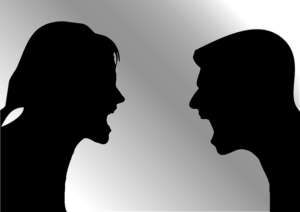Communication – it’s something we all do, every single day. Whether it’s a simple “hello” to a neighbor or an intense discussion at work, the way we convey our thoughts and feelings plays a crucial role in building connections and fostering understanding. I’ve seen firsthand how vital effective communication is in creating harmonious relationships, both personally and professionally.
But have you ever found yourself in a situation where you felt you were speaking, but not being heard? Or perhaps you’ve listened to someone, but couldn’t quite grasp what they were trying to convey? This disconnect often arises due to barriers that impede our ability to communicate effectively.
In this article, I’ll show you barriers to effective communication with examples from real-life situations. My hope is that by recognizing these barriers, you’ll be better equipped to navigate them and ultimately strengthen your bonds with those around you. Shall we dive in?
1. Physical Barriers
Imagine you’re trying to have a heart-to-heart conversation with a friend in a bustling café. The clinking of cups, the chatter of other customers, and the hum of machines all around. No matter how hard you lean in or how loudly you speak, you just can’t seem to hear each other properly. That’s a physical barrier in action. The noises around can be one of the barriers to effective communication.
Physical barriers are external factors that prevent us from transmitting or receiving a message effectively. They’re often overlooked because they seem trivial, but they can significantly disrupt our ability to communicate.
Example: Think about a remote team meeting where half the participants experience technical issues. Poor sound quality, low volume, or even a lagging video can all serve as physical barriers, making the meeting less productive and potentially leading to misunderstandings.
2. Cultural Barriers
Culture is a beautiful fabric of traditions, values, and beliefs. But sometimes, this fabric can become a wall between two communicators. When I meet clients from diverse backgrounds, I’m reminded of how barriers to effective communication can stem from cultural differences.
Example: Let’s say you’re working with a colleague from a culture where direct eye contact is deemed confrontational. You might interpret their lack of eye contact as disinterest or dishonesty when in reality, they’re showing you respect. Being aware of these differences can help prevent misconceptions and misinterpretations.
3. Emotional Barriers
Our emotions are powerful. They color our perception and can either enhance or hinder our ability to communicate. If you’ve ever tried to have a conversation while feeling extremely angry, sad, or anxious, you’d understand just how hard it is to get your message across clearly.
Imagine receiving negative feedback on a day when you’re already feeling down. Your emotional state might magnify the criticism, making it harder to process constructively. On the other hand, if you’re elated, you might overlook essential details in the feedback. Therefore, being emotionally self-aware can help you recognize and manage these barriers effectively.
Example: A couple having a heated argument might not be able to listen to each other’s points because their emotions are too high. Their emotional state acts as a barrier, preventing effective communication and mutual understanding.
4. Perceptual Barriers
Each of us sees the world through our own unique lens, shaped by our experiences, beliefs, and values. These lenses, while crucial in making us who we are, can sometimes distort the messages we send and receive.
Consider watching a movie with a friend. While you might find a particular scene heartwarming due to personal experiences that relate to it, your friend might see it as clichéd based on their life’s narrative. This divergence in perception highlights how two people can interpret the same information differently.
Example: Two co-workers might attend the same meeting but come away with different understandings of what was discussed. One might perceive a comment as a criticism, while the other sees it as constructive feedback. Recognizing our own biases and being open to others’ perspectives is key.
5. Language Barriers
Language is our primary tool for expressing thoughts, ideas, and feelings. But what happens when the words we use are unfamiliar to the listener? Misunderstandings arise, and the essence of the message can be lost. For instance, the phrase “knocking someone up” means waking someone up in the UK but has a very different connotation in the U.S. Such variances within the same language can lead to unintended misinterpretations or even awkward moments.
Example: Imagine explaining a technical process using jargon to someone outside your field. They might nod along, but there’s a good chance they’re not fully grasping what you’re saying. It’s essential to gauge your audience’s understanding and adapt your language accordingly.
6. Gender Barriers
Gender stereotypes and biases have been ingrained in many societies for centuries. And while strides are being made toward greater gender equality, these biases can still subtly influence our communication. You will agree with me that in certain settings, women might be expected to be more passive or agreeable, while men might be encouraged to be assertive. Such gendered expectations can prevent individuals from expressing their true thoughts and feelings.
Example: In a team setting, if a female member suggests an idea and is overlooked, but later a male colleague suggests the same and is praised, it’s a sign of an underlying gender bias. Such biases can hinder open communication and prevent all voices from being heard equally.
7. Technological Barriers
Technology has undoubtedly revolutionized the way we communicate. However, it’s not without its challenges. From software glitches to unfamiliar platforms, technological issues can impede smooth communication. Consider the nuances lost in a text message. Without tone or facial expressions, a message can be interpreted in multiple ways, leading to potential confusion or conflict.
Example: You’re in the middle of a crucial virtual presentation, and suddenly your screen freezes. By the time you reconnect, you’ve lost your audience’s attention, and the flow of your message is disrupted. Ensuring that both you and your audience are comfortable with the chosen technology can mitigate such barriers.
8. Interpersonal Barriers
Our personal biases, prejudices, and judgments can act as barriers to effective communication. These mental roadblocks can distort the way we interpret messages, leading to misconceptions. For instance, if someone has betrayed your trust in the past, you might find it hard to believe them in the future, even if they’re being sincere. Such interpersonal barriers can obstruct open and honest communication.
9. Organizational Barriers
Organizational structures, hierarchies, and internal policies can sometimes hinder open communication. Employees might feel restricted or even intimidated when trying to communicate with higher-ups or across departments.
Example: An employee might have a solution to a pressing company issue but feels hesitant to share due to a strict chain of command. Encouraging open channels of communication at all levels can help alleviate such barriers.
10. Environmental Barriers
The environment in which we communicate plays a more significant role than we might realize. Distractions or an unfavorable setting can deter the effectiveness of our interactions.
Example: Holding a serious business negotiation in a playground might not yield the desired results due to the informal and distracting setting. On the other hand, discussing a creative project in a stark, sterile office might stifle imaginative ideas. The environment should be conducive to the nature of the communication for it to be effective.
Conclusion
Barriers to effective communication are everywhere. Communication is a dance of sending and receiving messages. While it might seem straightforward, numerous barriers can step in between, making the dance feel clumsy and out of sync. By recognizing and understanding these barriers, you can navigate around them, ensuring that your dance of communication is as smooth and harmonious as possible. I encourage you to keep refining your skills, stay curious, and most importantly, always strive for understanding. Remember, it’s not just about being heard but also about truly listening.




